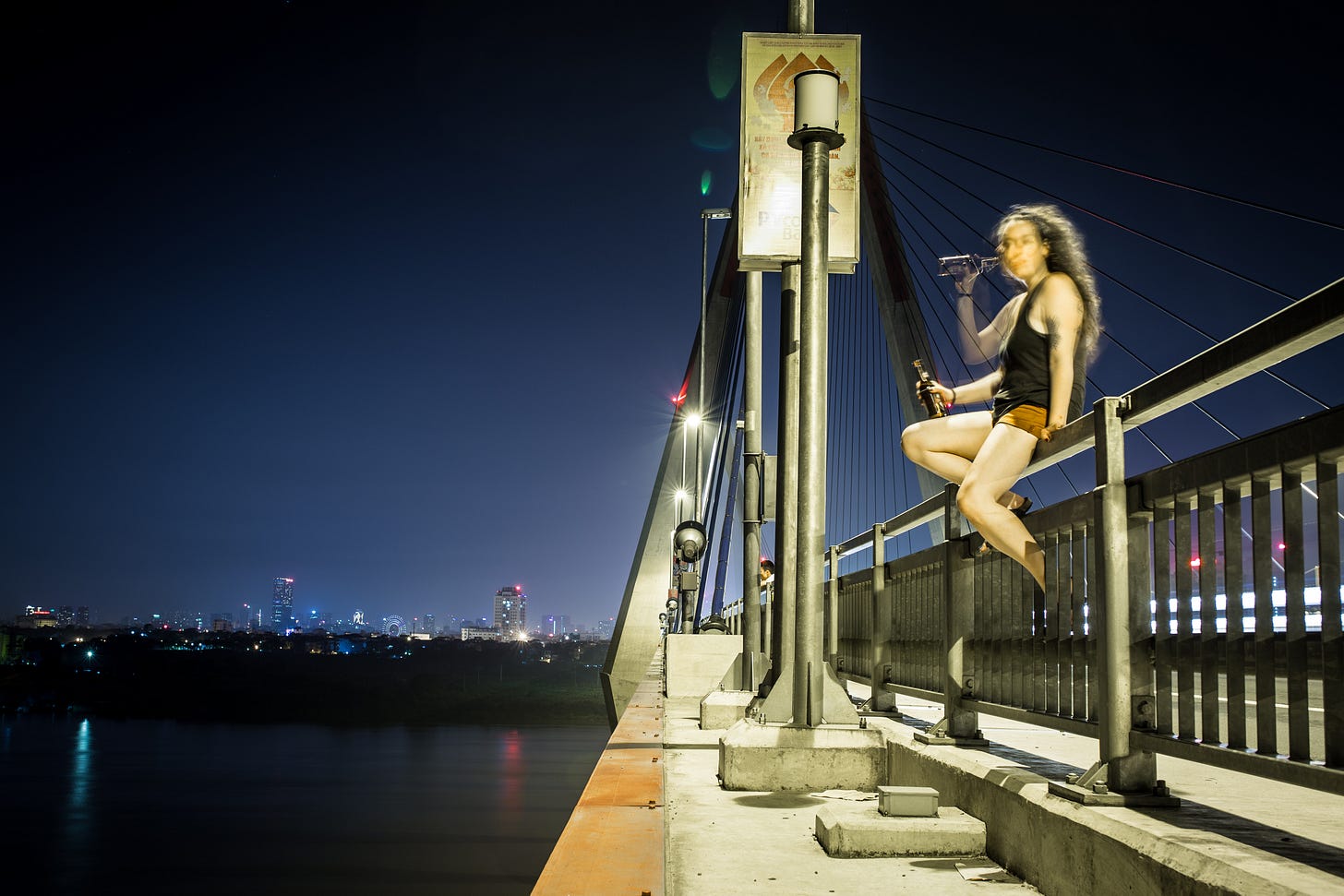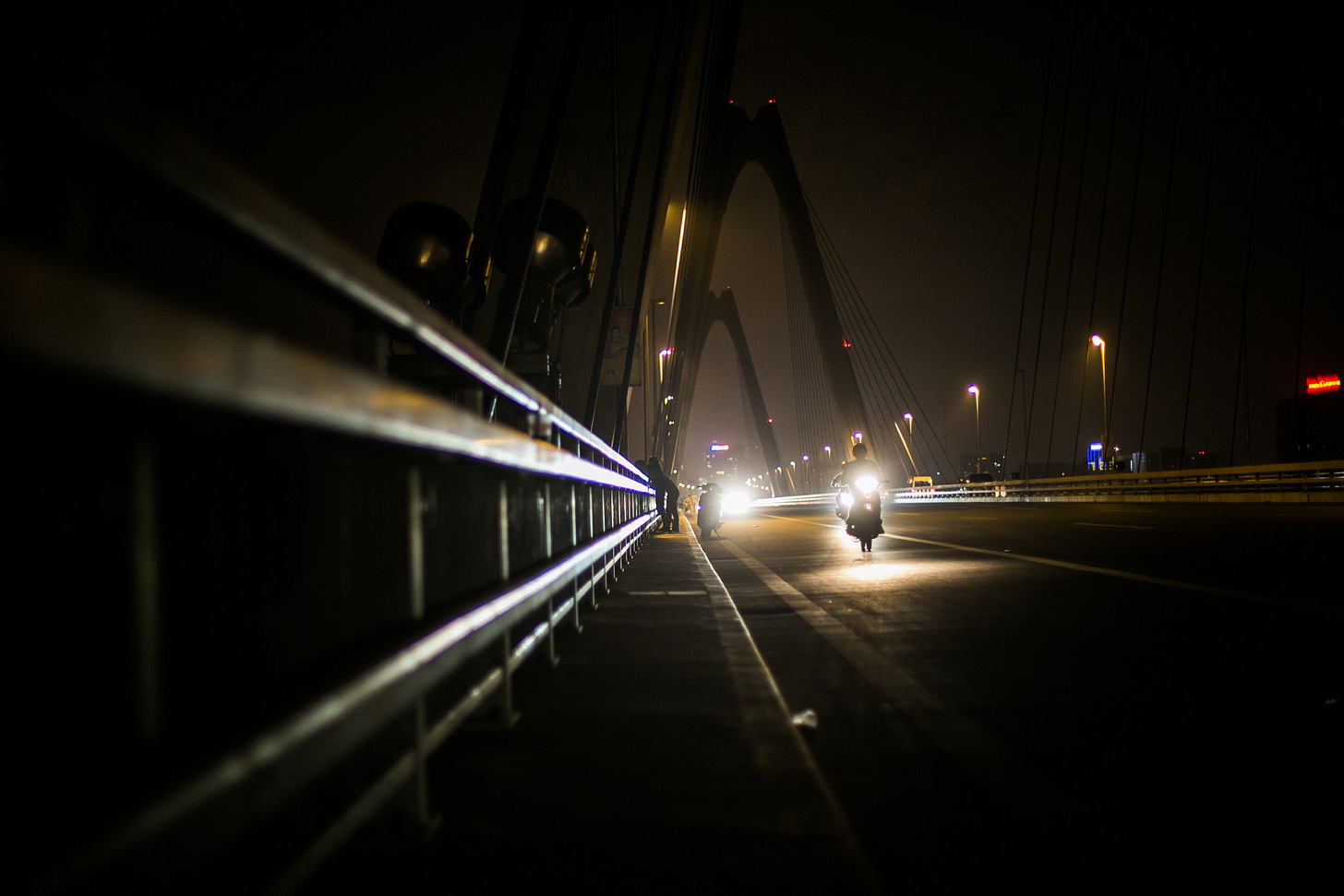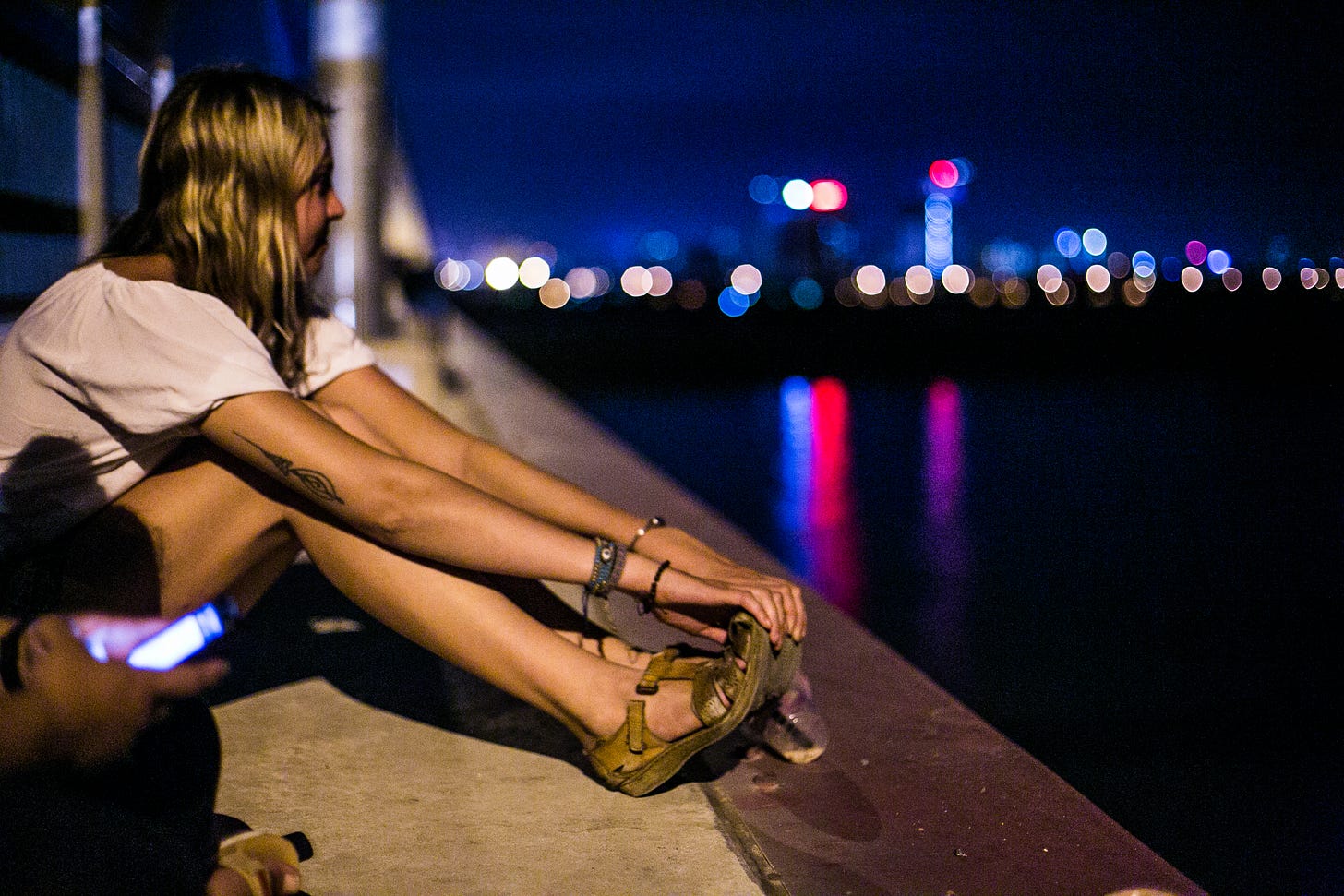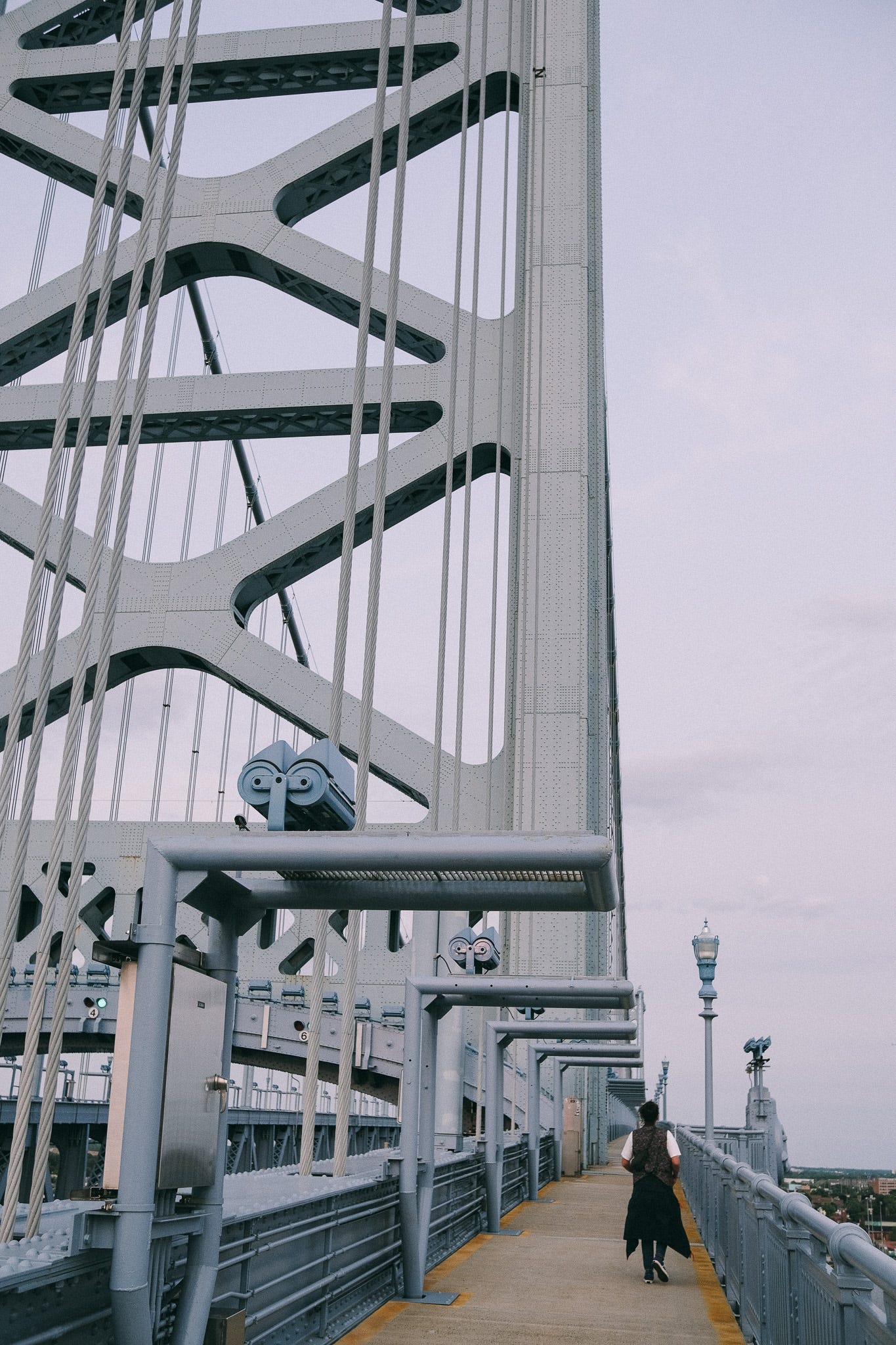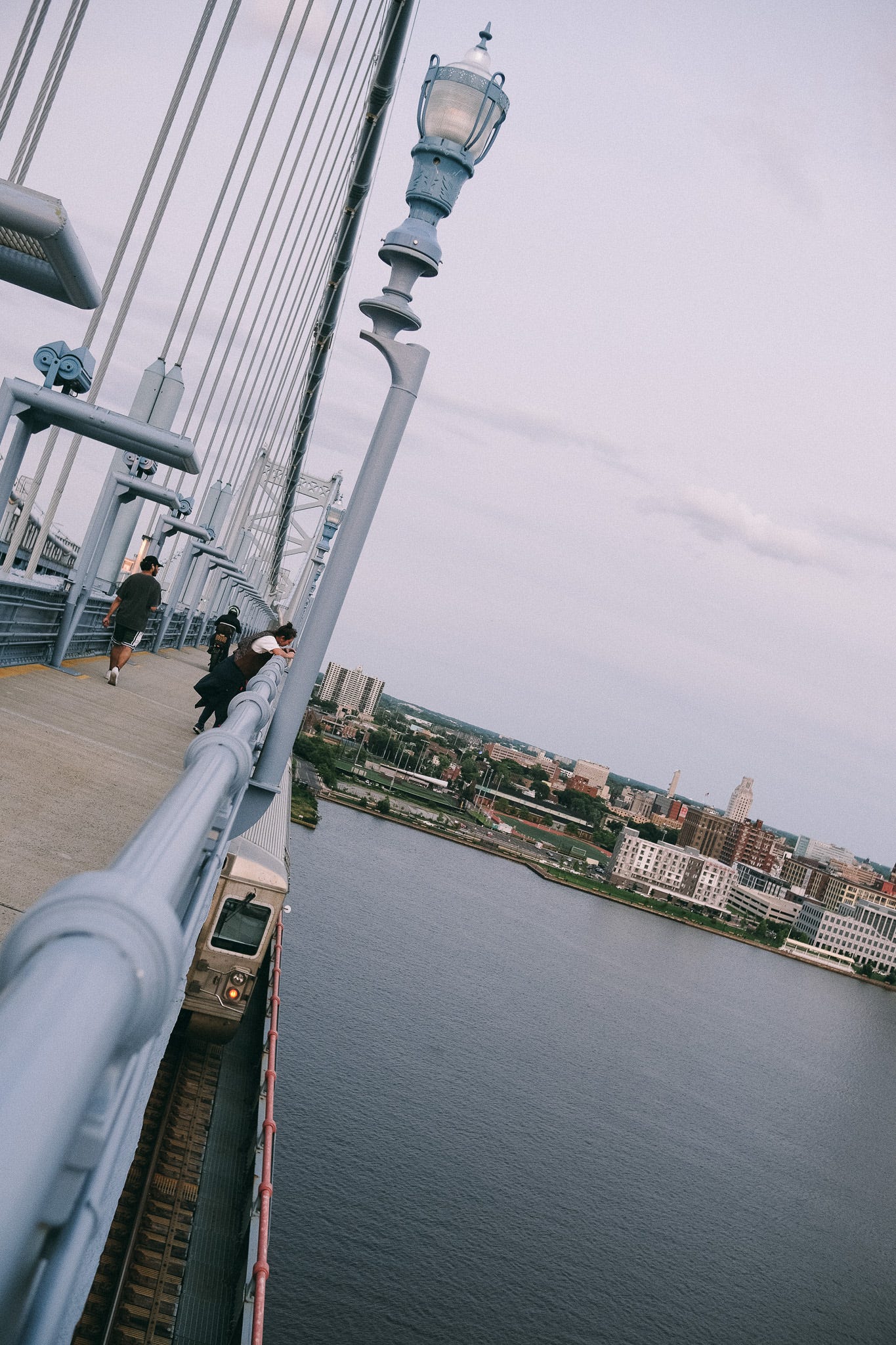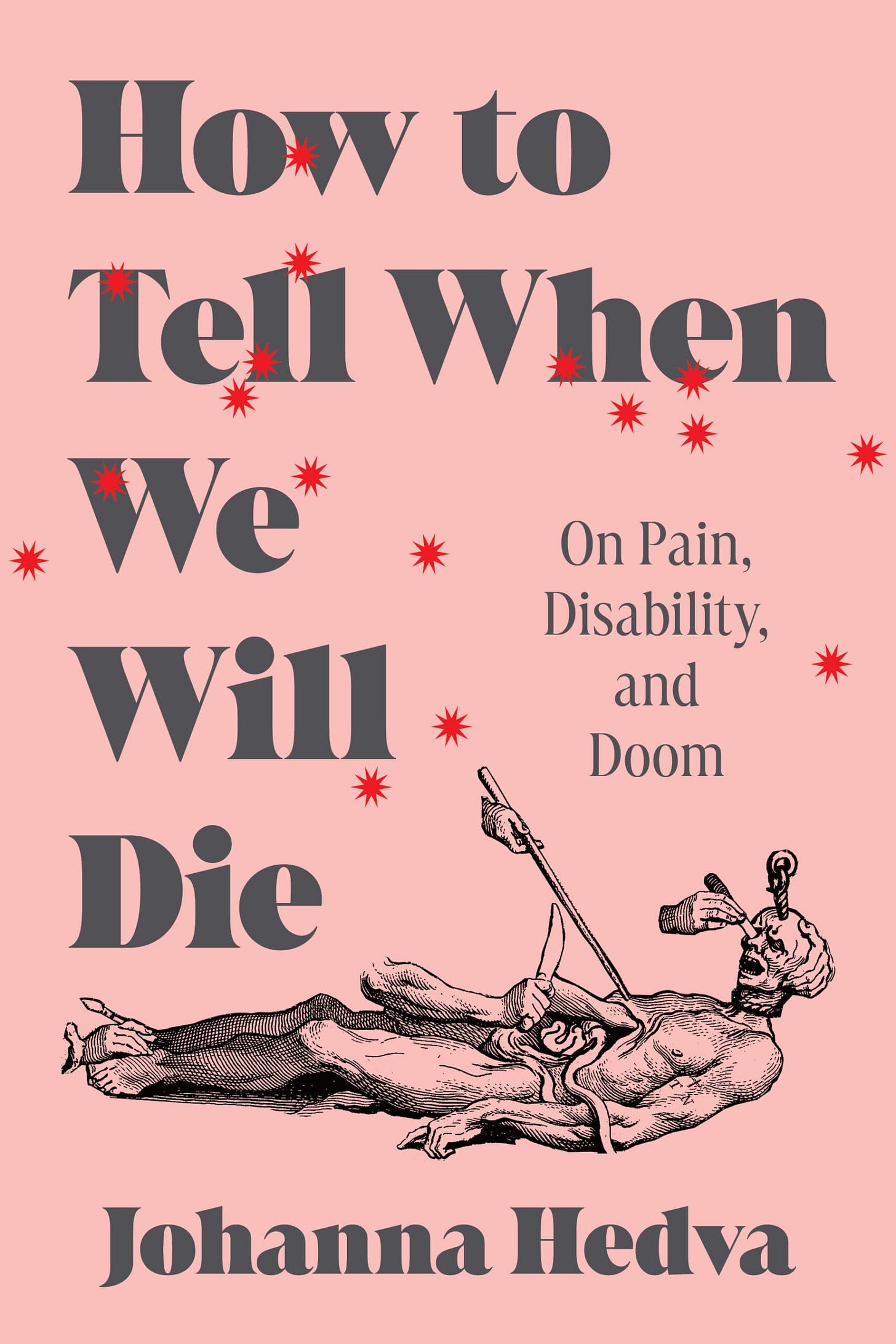Bridges In-Between
a personal update on learning to live with POTS, plus: the queer history of a popular chronic illness drug
I turned 35 last week. When my friend Kris asked what I wanted to do on my birthday, if I could do anything, I said the first thing that came to mind: let’s go up on the Benjamin Franklin Bridge.
It’s this massive hundred-year-old suspension bridge over the Delaware River that connects Philly to New Jersey, and I’ve been obsessed with it since we moved here three years ago. I have a thing for giant bridges, and in Philly, they all have human names, so I think of them as characters — there’s Benjamin and Walt, Betsy and Girard.
When I lived in Hanoi, I had a dangerous affair with one of the longest bridges in Southeast Asia, the Nhat Tan Bridge, which spans the Red River. My friends and I used to drive our motorbikes up to the highest point, park off to the side, and hop the barrier with a bag full of beer.
I loved the feeling of being so close to the edge, suspended over a river between shores with a river of traffic at our backs, an in-between, nowhere-place. At night, the only thing that separated the inky sky above from the dark water below was the city’s lights in the distance, and there we were, perched on this marvel of human engineering, drinking on the edge of nothingness.
That was almost ten years ago now, and time, thank god, has made me someone else. Less foolish, I think, but still attracted to the nowhere-places — bridges, train platforms, airport terminals. My spirit stays restless, even as my body demands more rest. It hasn’t been handling the whole being-upright thing too well lately, but I thought I could manage a stroll up Benjamin, if we only went half-way.
Benjamin is painted blue to match the sky. On my birthday, he was perfect — 65 degrees and a nice wind. We brought jackets, but we didn’t need them. We passed my camera back and forth like tourists in our own city, letting ourselves be silly, and awed by the mundane. The sidewalk sits above train tracks, and every time the PATCO rumbled by underfoot, we jumped up and down, cheering like it was the first time we’d ever seen it. Train! Train! Train!
My relationship with Benjamin stays on safe side of the fence; I no longer feel the need to flirt with the edge. Down the street from us, the entire Gayborhood was partying for Pride, but I knew a standing-room-only street festival would give me serious mashed-potato brain. I apologized to my friends for being so boring, and they brushed me off. No, it’s beautiful up here, they said. Do you need to sit down?
What have I learned, as I enter my 35th year on Earth? I am much slower than I think, and getting slower still. Pushing through it is not strength, but acquiescence. All the most interesting places are bridges in-between, and the people who love you will meet you where you are.
For paid subscribers this week: how I’m learning to cope with gravity intolerance, and the lesser-known queer history of low dose naltrexone!
On Becoming an Energy Accountant, and Other Ways to Live with POTS
My doctor’s advice was: salt, compression, beta-blocker. Two of those things are working really well for me, and since learning more strategies from the good ole internet, I can’t help but think of POTS as such a cunty little Victorian aristocrat condition — like, I simply must recline in my corset, under a UV-reflecting parasol! Come, tell me of your travels while I sip my salty tinctures. Would you like some of my snacking pickles??
I’ve been trying to learn pacing, which comes from the ME/CFS community, and oh boy, is it hard when you already don’t plan good! Honestly, it is a cruel joke that neurodivergents get more energy-limiting chronic illnesses and autonomic disorders, because we already suck at self-care. God is up there, and she is laughing!
There’s a lot of overlap between ME/CFS and POTS — orthostatic intolerance is actually on the symptom list for the former — so I find ME advice really helpful. “Don’t stand when you can sit, don’t sit when you can lie down,” is something I’ve come across a couple times in ME/CFS lore, but apparently, it’s also something professional cyclists and Winston Churchill liked to say, too, so I guess it applies to all of us?
In How to Tell When We Will Die, Johanna Hedva describes disability as ‘a radical encounter with the needs of [the] body’, one that we will all have someday, even though ableism, she argues, exists to deny this:
“Ableism protects us from the most brutal truth: that our bodies will disobey us, malfunction, deteriorate, need help, be too expensive, decline until they finally stop moving, and die. Ableism is what lets us believe that this doesn’t have to be true, or at least, that we can forestall it, keep it at bay, and that this is based entirely upon our own will.”
I know all this, intellectually, but I am not going to lie and tell you that I am perfectly accepting of my body’s latest deteriorations; that I didn’t cry in bed on my birthday this month and tell Gray, with maximum drama, that I felt like my life was over.
It’s not! That’s the ableism talking! I’m just transitioning, and transitions are terrifying. For me, becoming physically disabled is harder, in some ways, to accept than having a mental illness, or being autistic. I’m not sure why this is — maybe because it becomes more visible, less possible to camouflage in public, or maybe because the level of your body’s need intensifies your own vulnerability.
Hedva writes:
“Is this body empowered to decide its own fate? Does this body have the power to guarantee its own survival, support, resources, thriving? With disability, the answer to these questions is often no. This is what makes disability political—because the political is foremost about power: who has power, who does not, why, and what can be done about it.”
Anyway — I really suck at balancing my energy books. (I hate that I’ve slipped into financial metaphors for this. What’s a non-economic, non-spoon-based metaphor??) Energy accounting means thinking about where you can afford to shave off little bits of effort, so you can keep more energy in the bank. Where can I sit, instead of standing?
For now, I’ve:
Keep reading with a 7-day free trial
Subscribe to Sluggish to keep reading this post and get 7 days of free access to the full post archives.

